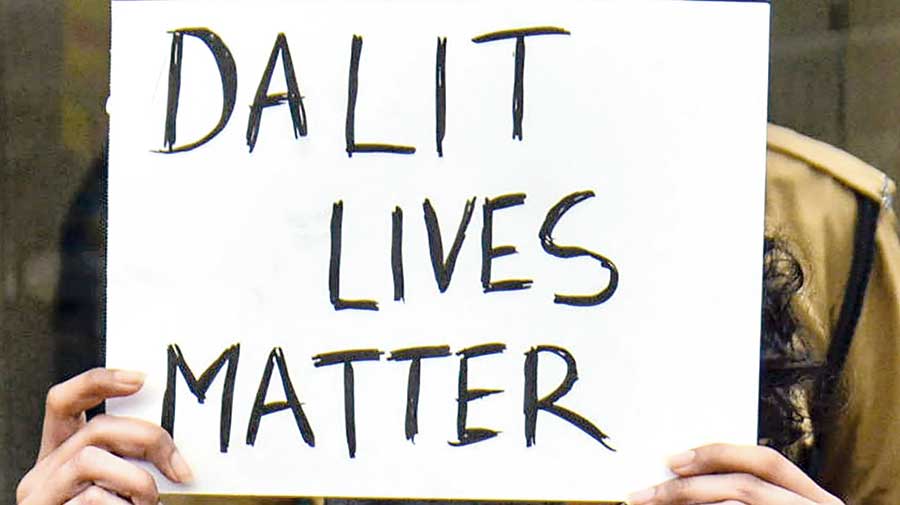The makers of modern India assumed that providing representation to marginalized caste groups would, over a period of time, result in substantive social and economic change. The result, however, has not been what they envisaged. Entrenched social and economic inequalities and stagnation on the one hand and the possibilities opened up by the vicissitudes of representational politics have opened up Dalit-Bahujan politics to various kinds of ethical dilemmas that it is unable to cope with. Representational politics was meant to provide newer opportunities to the majority of Dalit-Bahujans, better integrate them with the mainstream, and reduce conflict and prejudice against them. More than an integration that would have resulted in the inception of new values and ethics of reciprocity, what we are witnessing is a trade-off between greater representation and the tryst with ‘counter-revolution’. This has everything to do with the fossilized mindset of the dominant castes.
Representational/electoral politics has expanded opportunities for the underprivileged segments to become part of the ‘dominant coalition’ of governing elites. But this has also meant opening up newer wedges within and between the Dalits and the other backward classes. The Gandhian politics of accommodation and Nehruvian ‘centrism’ contributed to social change that led to the inclusion of a tiny ‘elite’ among the marginalized. This holds true of Dalit-Bahujan politics, which represents the interests of a miniscule section. The strategies and the discourses that this politics churn out are connected to this growing gap between a tiny, privileged minority and a vast, excluded majority. The Dalit intellectual and activist, Anand Teltumbde, had lamented for long that reservation has benefited about 6 per cent of Dalits, leaving the rest in abject poverty. One of the consequences of this is that this privileged minority among Dalits begins to be characterized more by its new-found class mobility rather than by caste-based concerns. It is not surprising that Anand’s incarceration has not mobilized Dalit-Bahujan organizations; most of them believe that articulating such ‘abstract’ structural issues brings no concrete benefits to the Dalit-Bahujan cause.
Electoral politics is about cobbling up a majority in numbers in a polity marked by social exclusion and economic inequalities. In order to make good of this gap, mainstream parties use manipulation, corruption and violence to create viable strategies. Dalit-Bahujan politics, too, cannot resist these imperatives. If anything, Dalit-Bahujan politics justifies such strategies as ones that merely reproduce the ‘rules of the game’ in the interest of vulnerable social groups. Pleas for ethical considerations and raising questions of social prejudice and economic inequalities within, therefore, are interpreted as upper caste conspiracies to weaken the process of achieving numerical majority. However, Dalit-Bahujan politics now needs to suppress internal fissures and address the questions of social differences and economic inequalities. The rhetoric of ‘manipulation’ has become a handmaiden to paper over difficult and uncomfortable questions. This mode of functioning is also acceptable to dominant caste groups as token representation is a smaller price to pay.
Much of social and political imagination in India is centred on this gnawing gap. Neoliberal Hindutva goes well with this situation of a deep cleavage between a small, privileged class and a vast excluded majority, even though the progress it demonstrates is without inclusion. A similar fate beckons Dalit-Bahujan articulations where they may be demand for English education for Dalits but not a common school system that provides free and quality education for all. Similarly, they are well-disposed towards demanding reservations in the private sector but do not question neoliberalism as it may provide relatively better opportunities than what are available. This is one reason why the Dalit-Bahujan constituency moved away from the Left, which could not provide such mobility. Substantial inclusion of the majority of the underclasses has been rendered invisible by the din of electoral mobilization and the promise of fast-paced reforms.
The alternative is fresh thinking. A new Dalit-Bahujan politics would require representative participation and assumption of leadership positions in a range of struggles — the right to education, right to work, struggle for employment and altering land relations and ownership patterns in the rural hinterland. This alone will initiate the process of inclusion for the majority but this will also mean that Dalits and Bahujans learn to speak a different language from the one focused on identarian politics. This would require investing greater trust in non-Dalit-Bahujan activists and organizations, new organizational norms to share platforms with democratic caste Hindus as well as an ability among non-Dalit-Bahujans to listen to voices that they may not understand as yet. Senior scholars like Teltumbe and younger voices like that of Jignesh Mevani are struggling to join the dots.
Ajay Gudavarthy is Associate Professor, Center for Political Studies, JNU










